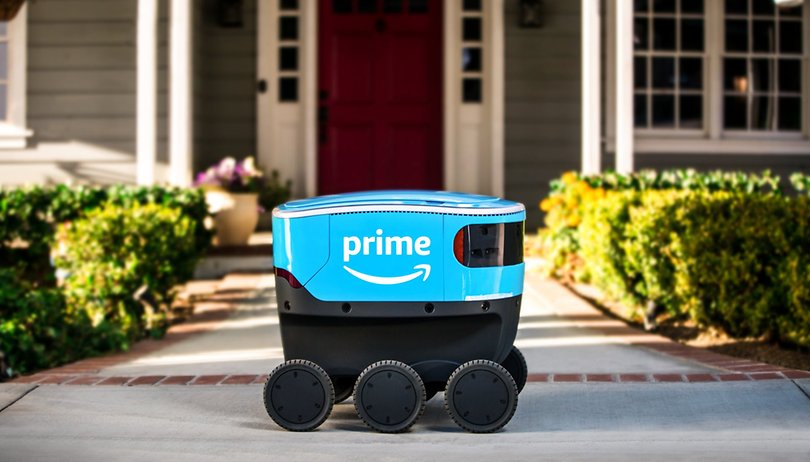Will we really see delivery robots invading our sidewalks this decade?


While robotization and experimentation have been regularly in the news in the world of technology for several years, what is the concrete outcome of this innovation in the field of delivery? Will we really see these robots invading our sidewalks, or is it a utopia?
For those of you who have never heard of delivery robots, let's start with a recap.
Since online shopping has become more democratic, delivery has become an integral part of the lives of millions of consumers around the world. Who hasn't been tempted by a purchase on Amazon? Not to mention the temptation to have supermarket groceries delivered directly to your home? It is obvious that for the majority of consumers going to a supermarket on a regular basis is a waste of time and a source of fatigue that comes back all the time (a bit like housework, by the way, but let's not get onto the subject!). In short, the invention of online shopping and home delivery is a major innovation that serves a large number of households.
Today, this delivery is managed by delivery men, human beings, real delivery men and women. Although it is not an easy job, because it is stressful due to the timing and physically difficult, it is a job that provides a living for thousands of women and men. For some time now, this model has been endangered by the creation of delivery robots. In order to meet the very high demand for deliveries, which is often difficult to manage for delivery personnel, and also for economic reasons, companies have imagined the use of robots that will deliver food as well as any other everyday consumer goods, even including garbage cans.
-
Amazon Scout: the first six-wheeled robot for home deliveries
A major innovation that could revolutionize the delivery of tomorrow
At CES 2020 in Las Vegas, Valeo unveiled its electric delivery droid developed with Meituan Dian, a Chinese e-commerce services company. This droid is touted as capable of delivering up to 17 meals per trip, and can adapt to complex urban environments at around 12 km/h without generating emissions. The connected delivery locker would allow a secure delivery that the customer can book via a smartphone application.
In the United States, delivery robots are already active, as is the University of Houston, which uses its machines to deliver food across campus. With 53,000 students, teachers and employees to feed, this university has chosen to equip itself with 30 small innovative vehicles. But why get these robots? Emily Messa, Associate Vice President of the University of Houston said: "By opening up our campus to this innovative service, which is paid for by customers, the university has not had to spend money to buy the technology, but we are improving our food delivery capabilities".
Deploying these robots in American universities seems to be an advertising asset for the parent companies, and a low-cost service to be added in the brochure of the university that accepts this service, to attract more and more students. Everybody wins. In practice, to access the service, users open the Starship Deliveries application (iOS and Android), choose the items they want in one of the eleven UH Dining locations, validate with a PIN code and select the delivery location.
The Starship company, which is collaborating with the University of Houston, is one of the main players in this market. By 2019, Starship already claimed that its fleet had made 25,000 deliveries and traveled 93,000 kilometers. These electric robots work thanks to artificial intelligence and a learning system. Equipped with sensors that allow them to move along sidewalks and around obstacles, they also know how to cross streets and climb small slopes. And of course the advantage of robots: they are able to work day and night and in all weathers.
The question of employment arises, what will become of our delivery people?
During an interview held between Jacques-François Marchandise and Nathalie Nevejans for the Industrie Techno site, two different opinions were expressed on the issue.
N. Nevejeans explains that: "Collaborative robotics will play a major role in machine acceptance. Industrial robots capable of working with humans offer significant economic advantages in terms of efficiency, quality, speed, flexibility, etc... But they are also valuable to the employee, as they provide a solution to the drudgery and repetitiveness of work, and help to eliminate musculoskeletal disorders."
J-F. Merchandise is more moderate on this subject and states that: "Robotisation can be value-destroying, both in the work environment and in terms of human relations or skills, especially when these are transferred to machines. It is necessary to anticipate these difficulties and prevent these harmful effects by increasing the control of men over machines. This means integrating quality of life at work into the design of systems, strengthening the training of staff and developing objectives and indicators that take account of the human dimension of work.
If the robot is there to relieve the employee in the management of the most difficult tasks, indeed it is a good thing, but on condition that you intelligently anticipate the place at work of each of the two.
What would our sidewalks look like?
While many people in small villages are delighted with the democratization of online shopping because they have few local shops, the e-commerce giants have offered them a wide range of products without having to leave their homes. Before that, these consumers had to make the effort to go to the shops in the nearest town. A real revolution for this target group of buyers. By continuing to make the choice to buy on the Internet and have it delivered, we increase demand and encourage the creation of alternatives to "real" deliverers, and that's where the robots come in.
The question we are entitled to ask ourselves is: what will our streets and sidewalks look like? I have in mind a vision of a futuristic city where passers-by will cross the path of robots, an even more offbeat vision for the streets of small villages... There is also the question of security. Will these robots be sufficiently well equipped so as not to create accidents and, on another level, so as not to be victims of vandalism by ill-intentioned people? Another question: of course these robots must be electric, but the possible proliferation of these devices will clearly not improve the ecological concern we are already facing today, both in terms of their construction and in terms of their disposal when they become obsolete. Unless this industry finds solutions to build better, using fewer resources and perhaps using recyclable materials.
But what about the future of the delivery? This raises the question of over-consumption, which affects us closely and is an increasingly common subject of reflection. Do we really need all these things? Once consumed and unusable, what will become of them? Do I really want to actively contribute to the proliferation of waste? It is also this environmental issue that is adjacent to the evolution of means of delivery.
What do you think about it? Share your opinions in the comments.




















Considering how fast is develops nowadays sure in some places it will become a usual thing.
They're trundling the walks at a number of universities I've seen.
-
Admin
Feb 21, 2020 Link to commentI live in Vietnam. With the traffic we have here, the state of the roads and the habit of leaving garbage everywhere, they would last a couple of days at best
Same here in the Philippines